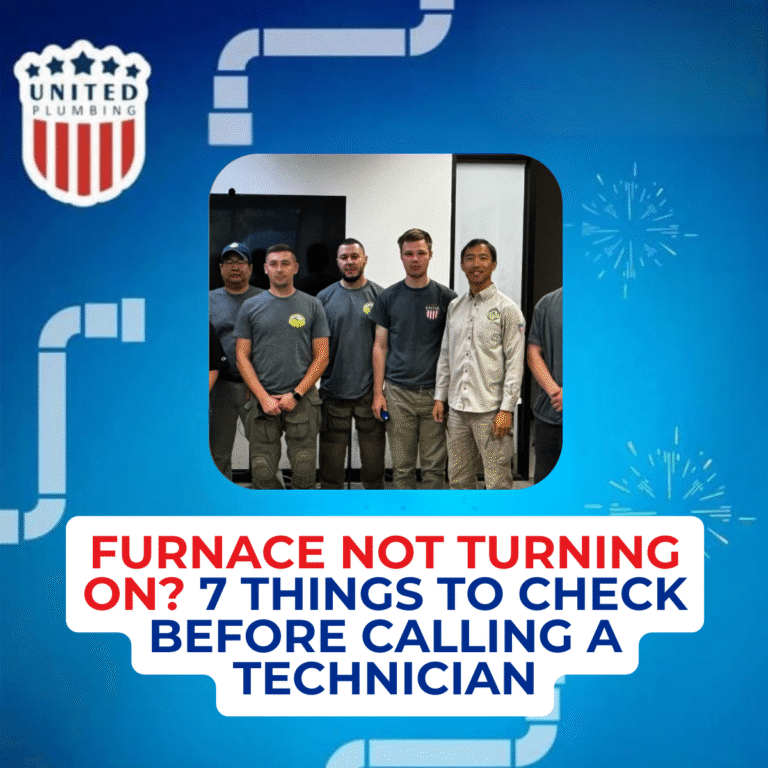FIVE-STAR TEAM WARRANTY &
SAME-DAY SERVICE
How Much Does It Cost to Fix a Clogged Sewer Line in 2025?
If you’ve tried every drain cleaner under the sun, snaked the sink yourself, or even watched a dozen YouTube tutorials but your drains still back up I get it. I’ve seen this exact scenario hundreds of times in my years as a plumber. The truth is, when multiple drains start acting up, it’s usually not a simple clog. It’s your sewer line trying to tell you something.
Homeowners often call me after weeks of frustration, wondering how something as invisible as an underground pipe can cause so much chaos. And when it comes time to fix it, the first question I always hear is:
“How much is this going to cost me?”
Let’s break that down honestly, from experience.
What Really Causes a Clogged Sewer Line? (From What I’ve Seen in the Field)
Most people are surprised to find out that the real cause isn’t inside the house at all. Over the years, I’ve seen everything from:
- Tree roots sneaking through tiny cracks and growing until they block the line completely.
- Grease buildup that’s hardened like candle wax inside the pipe.
- Collapsed or corroded pipes — especially in older homes with clay or cast-iron systems.
- “Flushable” wipes that definitely aren’t flushable.
- And sometimes, simple soil shifting after a heavy rain, which can offset an entire section of pipe.
Each situation is different, and that’s why a quick fix never works for long.
The Real Cost to Fix a Clogged Sewer Line in 2025
Now for the part everyone worries about the cost.
In 2025, the price can vary depending on what’s actually happening underground. From what I see on most jobs:
- Basic cleaning or hydro jetting: usually the first step. It’s great for soft blockages or grease buildup.
- Sewer camera inspection: essential before doing any repair. It tells me exactly what’s going on without guesswork.
- Minor repairs or spot fixes: if it’s just a small section that’s damaged, we can repair that portion without replacing the whole line.
- Full replacement: only needed if the pipe is severely collapsed or invaded by roots beyond repair.
I always tell customers the earlier you catch it, the cheaper it is. Waiting until sewage backs up into the shower or laundry drain usually doubles the cost and the stress.
How to Tell It’s a Sewer Problem (and Not Just a Drain Issue)
Here’s a quick way I explain it to homeowners:
If just one drain is clogged, it’s likely a local issue.
But if everything starts draining slow the toilets, sinks, and tubs the problem’s in the main line.
Other warning signs I see all the time include:
- Water bubbling in the toilet when you run the sink.
- Gurgling sounds coming from the drains.
- A foul smell from the tub or shower drain.
- Water backing up in lower drains (especially in basements or first floors).
When that happens, no amount of plunging or drain cleaner will solve it.
Why DIY Drain Cleaners Don’t Work (And Sometimes Make It Worse)
I’ve walked into countless homes that smell like bleach or sulfur from store-bought drain cleaners. Homeowners mean well, but those chemicals don’t reach deep clogs and worse, they can corrode old pipes or damage seals.
If you’ve already tried that route, don’t feel bad almost every customer I meet has. But when a problem keeps coming back, it’s a sign of something bigger. That’s when professional equipment (like hydro jetting and camera inspection) becomes your best friend.
How We Fix Sewer Line Problems the Right Way
Whenever I handle a sewer line job, the first step is always a camera inspection. That’s how we see what’s really happening underground. Once we find the cause, we’ll recommend one of three solutions:
- Hydro Jetting: For grease or soft blockages. High-pressure water clears the line completely.
- Trenchless Repair: Fixes or replaces a damaged section without tearing up the yard something homeowners love.
- Traditional Repair: Still needed if the pipe is fully collapsed or too old for lining.
I’ve learned over time that clear communication with homeowners matters just as much as the repair itself. Knowing your options helps you make the best decision for your home and your budget.
Tips I Give Every Homeowner to Prevent Future Sewer Clogs
After every repair, I always share a few things that actually make a difference long-term:
- Schedule a yearly sewer camera inspection, especially for older homes.
- Never flush wipes — even if the label says you can.
- Avoid pouring grease or oil down your drains.
- Trim large tree roots near your sewer line.
- And if you notice slow drains, don’t wait call before it turns into an emergency.
A small service call is always cheaper than a full excavation.
Final Thoughts from Experience
After years in this trade, one thing I’ve learned is that most homeowners don’t think about their sewer line until something goes wrong and that’s completely understandable. But your main line is like the heart of your plumbing system: if it’s not flowing, nothing else works.
In 2025, fixing a clogged sewer line can cost anywhere from a quick, affordable cleaning to a major replacement, but what really determines the price is how early you catch it.
If your drains are slow, gurgling, or backing up don’t wait for it to get worse. Get a professional inspection, understand your options, and you’ll likely save yourself thousands (and a lot of stress) down the line.
Frequently Asked Questions
1. How do I know if my sewer line is clogged or broken?
If multiple drains clog at once or you hear gurgling after flushing, that’s a sign of a main line issue. A camera inspection will tell for sure.
2. Can I fix a clogged sewer line myself?
You can try plunging or snaking, but if the problem keeps coming back, it’s likely deeper than a DIY fix can reach.
3. Does hydro jetting damage pipes?
No when done properly, it’s safe and actually helps extend your pipe’s lifespan by clearing buildup completely.
4. How often should I have my sewer line inspected?
Once every 1–2 years, especially in older homes or areas with large trees.
Post views: 97
Latest posts

Furnace Not Turning On? 7 Things to Check Before Calling a Technician
When your furnace won’t turn on, it’s stressful. The house is getting colder, everyone’s complaining, and you’re...

5 Ways to Make Your Electrical System More Energy Efficient
Improving your home’s electrical energy efficiency does not always require major upgrades or expensive renovations....


If you still have questions or need advice, please leave a request and we will contact you as soon as possible
Need a plumber and got no clue where to start?
(408) 539-6936Facing a plumbing issue? Get a FREE in-person estimate and quick solutions from our skilled technicians, ensuring your home runs smoothly again!
